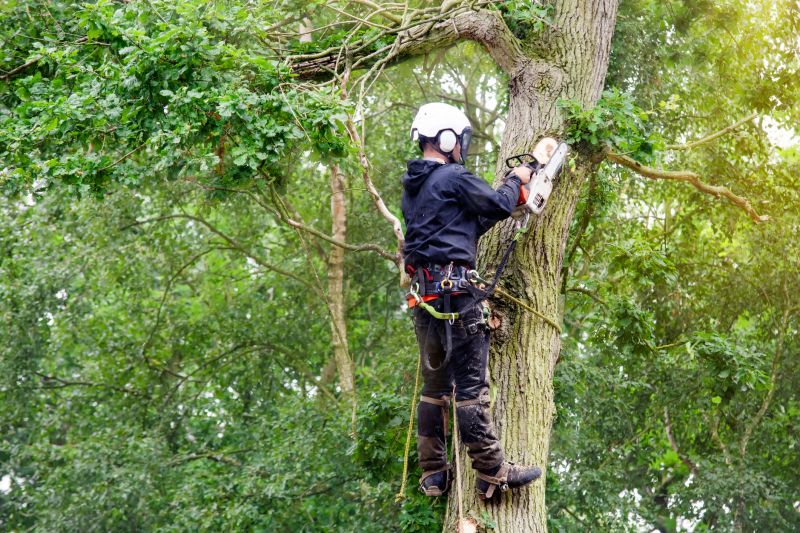Expert Picks For Essential Arborist Inspection Equipment
Get insights into the top tools and devices favored by industry experts for comprehensive and reliable tree inspections.
 Products designed for arborist inspections are essential tools that facilitate the safe and effective assessment of trees and their surrounding environments. These tools help arborists evaluate tree health, structural stability, and potential hazards, ensuring informed decision-making for maintenance or removal. High-quality inspection equipment can enhance accuracy, improve safety protocols, and streamline the inspection process.
Products designed for arborist inspections are essential tools that facilitate the safe and effective assessment of trees and their surrounding environments. These tools help arborists evaluate tree health, structural stability, and potential hazards, ensuring informed decision-making for maintenance or removal. High-quality inspection equipment can enhance accuracy, improve safety protocols, and streamline the inspection process.
Top Overall Option
Multi-Functional Tree Inspection Kit
A versatile inspection kit equipped with essential tools such as a digital moisture meter, resistograph drill, and high-quality safety gear. Designed for comprehensive tree assessments, it offers arborists a reliable set of instruments to evaluate internal and external tree conditions efficiently.
Types of Products For Arborist Inspections
Digital Moisture Meters
Devices that measure moisture levels within tree tissues to assess health and identify potential issues.
Resistograph Drills
Specialized tools that drill into trees to evaluate internal decay and structural integrity without causing significant damage.
Sonic Tomographs
Non-invasive imaging devices that visualize internal tree structures to detect decay or cavities.
Portable X-Ray Machines
Advanced equipment providing internal imaging of tree tissues for detailed health assessments.
Tree Measurement Tools
Tools such as diameter tapes, clinometers, and height poles for accurate tree dimension measurements.
Climbing Safety Gear
Harnesses, ropes, and ascenders designed for safe access to tall or difficult-to-reach trees.
Personal Protective Equipment
Helmets, eye protection, gloves, and high-visibility clothing to ensure safety during inspections.
Bore Scopes
Flexible cameras used to inspect tree cavities and internal structures visually.
Dendrometers
Instruments that measure growth and movement in trees for health monitoring.
Sounding Devices
Tools that produce sound waves to detect internal decay or hollowness within trees.
Laser Range Finders
Devices used to measure distances accurately for site assessments and planning.
Digital Cameras and Drones
High-resolution imaging tools and aerial drones for detailed visual inspections of large trees.
Popular Choices
Widely used for quick assessment of internal moisture levels in trees.
Commonly employed to evaluate internal decay without invasive procedures.
Popular for non-invasive internal imaging of large or complex trees.
Essential for accessing high canopies safely during inspections.
Standard safety equipment used by professionals during all inspection activities.
Increasingly used for detailed internal assessments in advanced inspections.
Popular for cavity inspections and internal visualizations.
Commonly employed for monitoring tree growth and health over time.
Useful for accurate measurements of tree height and canopy spread.
Increasingly used for aerial inspections of tall or hard-to-access trees.
A comprehensive approach to arborist inspections often involves a combination of handheld tools, digital devices, and specialized equipment. Handheld tools like measuring tapes, calipers, and resistograph drills allow for detailed physical assessments of tree components. Digital devices such as moisture meters, sonic tomographs, and portable X-ray machines provide non-invasive insights into internal tree conditions, revealing issues that might not be visible externally.
Safety is paramount during inspections, making personal protective equipment (PPE) a core component. Helmets, eye protection, gloves, and high-visibility clothing help protect arborists from potential hazards. Additionally, climbing gear such as harnesses, ropes, and ascenders are necessary for accessing hard-to-reach areas of tall trees. The right combination of tools and safety equipment ensures thorough inspections while minimizing risk.
Investing in reliable and versatile products for arborist inspections can significantly improve the quality of assessments. Whether for routine maintenance, diagnosing structural concerns, or planning tree removals, selecting appropriate tools tailored to specific inspection needs is crucial. Proper training on equipment use further enhances safety and accuracy, making these products vital for professional arborist operations.
Key Buying Considerations
- Assess the specific inspection needs, such as internal decay detection or external measurement.
- Ensure compatibility of digital tools with your existing equipment and software.
- Prioritize safety features and certifications when selecting PPE and climbing gear.
- Consider the ease of use and portability of handheld devices for fieldwork.
- Evaluate the accuracy and resolution of imaging devices like sonic tomographs and X-ray machines.
- Check for durability and weather resistance, especially for outdoor use in various conditions.
- Determine the power source requirements and battery life for portable equipment.
- Review training and support options provided by manufacturers or suppliers.
- Balance cost with features to ensure value without compromising essential functionalities.
- Look for versatility in tools to cover multiple inspection aspects with a single kit.
- Consider the size and weight of equipment for ease of transport and handling.
- Verify calibration and maintenance requirements for precision instruments.
- Explore options for data storage and transfer capabilities for detailed reports.
- Assess the availability of spare parts and accessories for long-term use.
- Review user feedback and ratings to gauge reliability and performance.
This content may contain affiliate links. We may earn a commission at no additional cost to you, which helps support our efforts to provide helpful information.
